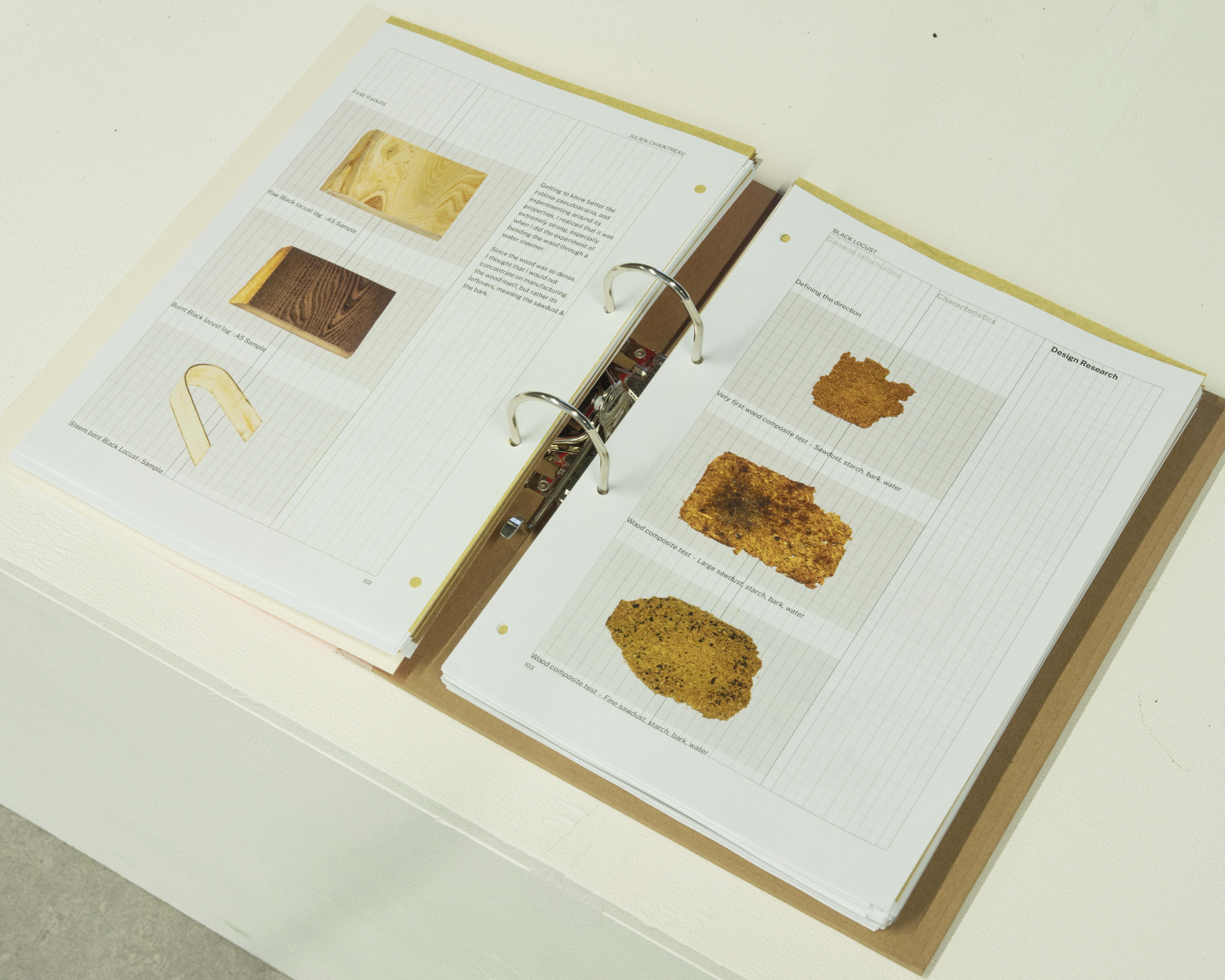
Black Locust
DAE / 2020
Context: Masters Project
Collaborators: Erik Slor (HuisVeendam) ︎︎︎, Lenneke Langenhuijsen (Buro Belén)︎︎︎
Photography: Jeroen Van de Gruiter︎︎︎
For this project led by Buro Belén, the aim was to choose a specific tree species that could be found in the Netherlands, and experiment around it. Thanks to the knowledge I previously acquired with the Camo OSB project, I knew a little bit about tannins & natural binders derived from timber.
So I selected the Robinia Pseudoacacia, commonly called Black locust as I knew that it shared limited but common attributes with the Acacia family, especially tannin, massively present in the bark of the tree. Tannins are known to enhance binding effects when combined with other natural binders such as cornstarch.
The Black Locust species itself wasn’t a big player in the timber industry, due to its stifness inducing limited machining properties. Its usage was therefore limited to electrical posts and to feed the fire in chimneys. I therefore decided to focus my research on the bark of the tree.
I received the help from Erik Slor, which is a chemist and researcher working with wood biolaminates. He gratefully provided different starches that I was ready to test. After crushing the bark, I started experimenting with these elements which required heat to activate and enable the laminate binding. Therefore, I decided to build a custom mold out of steel which I would place in an oven for each try-out.




